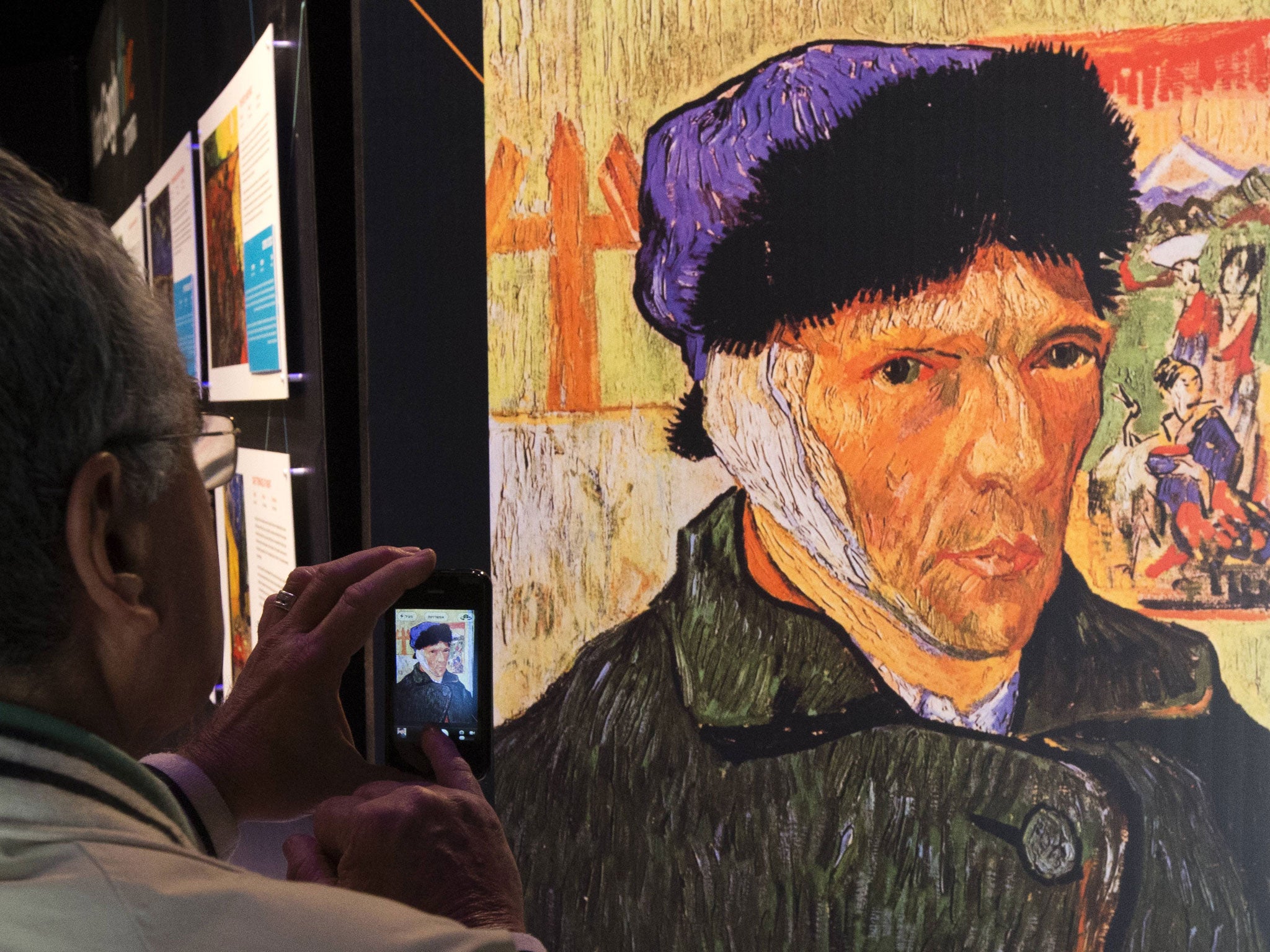Van Gogh's 'living' ear exhibited at German museum
The ear was 3D-printed using DNA from the great-grandson of the Dutch artist's brother

Your support helps us to tell the story
From reproductive rights to climate change to Big Tech, The Independent is on the ground when the story is developing. Whether it's investigating the financials of Elon Musk's pro-Trump PAC or producing our latest documentary, 'The A Word', which shines a light on the American women fighting for reproductive rights, we know how important it is to parse out the facts from the messaging.
At such a critical moment in US history, we need reporters on the ground. Your donation allows us to keep sending journalists to speak to both sides of the story.
The Independent is trusted by Americans across the entire political spectrum. And unlike many other quality news outlets, we choose not to lock Americans out of our reporting and analysis with paywalls. We believe quality journalism should be available to everyone, paid for by those who can afford it.
Your support makes all the difference.A ‘living’ replica of Vincent van Gogh’s ear, re-built using body cells provided by a member of the late artist’s family, has gone on display at a German museum.
Artist Diemut Strebe constructed the work called Sugababe using genetic material donated by Lieuwe van Gogh, the great-grandson of the Dutch artist's brother, Theo, according to the Center for Art and Media in Karlsruhe, southwest Germany.
The artist used a 3D-printer to re-create the ear that Vincent van Gogh is said to have cut off during a psychotic episode in 1888.
“I use science basically like a type of brush, like Vincent used paint,” Strebe told reporters on Tuesday.
Visitors to the exhibit will be able to speak to the ear through a microphone connected to a computer processor which will simulate nerve impulses, according to the artists’ website.
American philosopher and linguist Noam Chomsky was the first to talk to the ear.

The US-based artist explained that she grew the ear at Boston's Brigham and Women's Hospital, in the US state of Massachusetts.
The specimen is being kept alive inside a case of nourishing liquid, in which it could theoretically last for years, she added.
Persuading Liuewe van Gogh to partake in the project was easy, said Strebe, adding: “He loved the project right away.”
Lieuwe and Vincent van Gogh share about 1/16th of the same genes, including the Y-chromosome that is passed down the male lineage.
Strebe had hoped to use DNA taken from an envelope believed to have been used by the post-Impressionist artist, but it soon became clear the genetic material belonged to someone else.
"The postman messed it up," Strebe joked.
Undeterred, Strebe is now working with a female relative of van Gogh in order to include mitochondrial DNA — passed down the mother's line — for future installations.
In a separate ongoing project, the self-styled bio-artist will test the neutrality of 20 scientists by putting litmus-paper in their mouths. Participants have so far included Noam Chomsky, and Nobel Prize winner Martin Chalfie.
The exhibition runs until 6 July. Strebe said she plans to display the ear in New York next year.
Additional reporting by AP
Join our commenting forum
Join thought-provoking conversations, follow other Independent readers and see their replies
0Comments